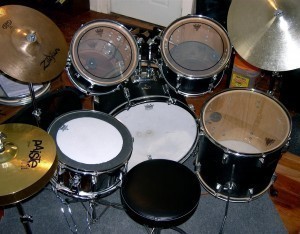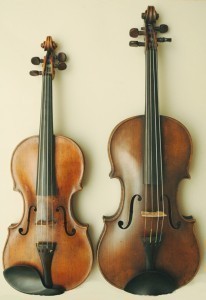Size of a Saxophone
Combining the best qualities of woodwind and brass instruments, the Saxophone was created and named after Paris-based Belgian instrument-maker Adolphe Sax in 1841. The intent was to fashion an instrument that would marry the adaptability of a brass with the vocal capacity of a woodwind.
Sax had prior experience in modifying the bass clarinet’s acoustics and key work, as well as lengthening the instrument’s lower range. He had also been involved in the manufacture of the ophicleide, a brass instrument which had keys not unlike those of a woodwind. Sax’s expertise with the two musical instruments enabled him to invent an instrument that utilized a single-reed mouthpiece similar to that of a clarinet, had a cone-like brass body resembling an ophicleide’s, and possessed the acoustic capability of a clarinet and a French horn. This instrument, the saxophone, was patented on June 28, 1846.
Although the saxophone is typically made from brass, it is still considered as a woodwind instrument since it produces sound using oscillating reeds. Nearly every saxophone made during the 1920’s was equipped with key touches, which were made out of either plastic or mother of pearl. Another material utilized in the manufacture of saxophones is phosphor bronze. Once a sax has been built, a thin coat of clear or colored acrylic lacquer is applied on the brass. This process is done to keep the brass from getting damaged by oxidation. Aside from this, it also serves to give the sax a nice shiny look. Other optional types of coating are nickel, gold, and silver plating.
The 2 main parts of the saxophone are the neck and the body. The neck, also called the gooseneck, is the removable tube on top of the sax. The body of the sax, in turn, is composed of 3 parts. The main body or the body tube is the part where the keys are operated by the fingers of the saxophonist. The next part is the bow, the saxophone’s U-shaped bottom tube. Finally, the part from where the sound exits is the bell.
There are various types of saxophones, each with its own unique size. Among the most common is the Tenor saxophone, which measures approximately 28” in height and 18” in width. The smallest type of saxophone is the Sopranino, which measures only around 7” high. The medium-sized Alto saxophone measures an average length of 25.2” and an average width of 4.72”. The Soprano saxophone has a length of 27.56” and its width on average is around 7.87”. As far as weight goes, the heaviest sax is the Baritone, which has a mass of around 13-14 lbs. And the lowest-pitched sax, the Contrabass, also happens to be the biggest, standing at 7’ tall.





